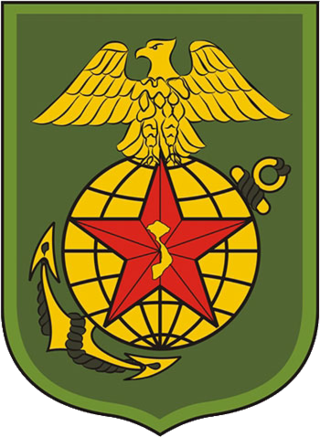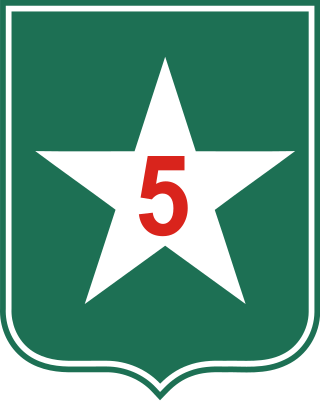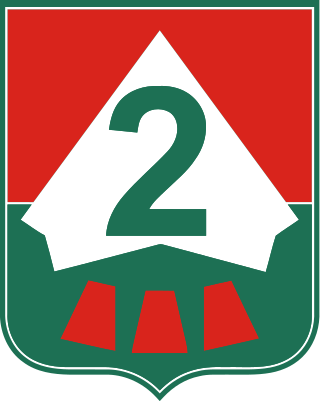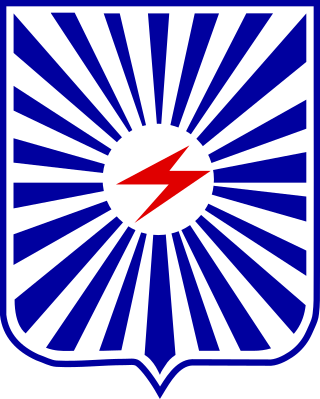
Brigadier General Trần Văn Hai (1927 – April 30, 1975) was an officer in the Army of the Republic of Vietnam. He was born in Cần Thơ.

Brigadier General Trần Văn Hai (1927 – April 30, 1975) was an officer in the Army of the Republic of Vietnam. He was born in Cần Thơ.
In 1951, Hai graduated from the Dalat Military Academy, Class 7.
In May 1968, he was commanding the Ranger Branch Command, directly supervising the Ranger operations to clear Vietcong (VC) forces that infiltratedthe Chợ Lớn area in the May Offensive. On 2 June Hai was onboard a United States Army UH-1 gunship that was firing rockets at VC positions. One of the rockets misfired and hit a South Vietnamese command group at the Thuong Phuoc High School, killing Saigon police chief Lieutenant colonel Nguyễn Van Luân, port director of Saigon Lieutenant colonel Pho Quoc Chu, 5th Ranger Group commander Nguyễn Van Phuoc and 4 other officers, all allies of Prime minister Nguyễn Cao Kỳ. Kỳ was supposed to be present but cancelled; the attack gave rise to rumours that this was an attempt by President Nguyễn Văn Thiệu to assassinate his political rival Kỳ. [1]
On 8 June 1968 Thiệu appointed him as director general of the Republic of Vietnam National Police, replacing Nguyễn Ngọc Loan. During the next week he replaced seven of Saigon's nine district police chiefs. [1]
He was the commander of the 7th Infantry Division at Dong Tam, near Mỹ Tho.
In 1970, he was commander, Special Tactical Area 44, before commanding the 7th Division. He was renowned for being incorruptible, outspoken and brave.
On April 30, 1975, at midnight he committed suicide at the Division Headquarters, Đồng Tâm Base Camp. His motives are unknown, but according to NY Times, General Hai feared persecution due to the humiliation of surrendering to VC divisions outside at the NH4 (now National Route 1A). [2] General Hai is one of the five ARVN generals who committed suicide to avoid a humiliating surrender to VC/NVA soldiers.

Nguyễn Văn Thiệu was a South Vietnamese military officer and politician who was the president of South Vietnam from 1967 to 1975. He was a general in the Republic of Vietnam Armed Forces (RVNAF), became head of a military junta in 1965, and then president after winning a rigged election in 1967. He established rule over South Vietnam until he resigned and left the nation and relocated to Taipei a few days before the fall of Saigon and the ultimate North Vietnamese victory.

The Army of the Republic of Vietnam composed the ground forces of the South Vietnamese military from its inception in 1955 to the Fall of Saigon in April 1975. At the ARVN's peak, an estimated 1 in 9 citizens of South Vietnam were enlisted, composed of Regular Forces and the more voluntary Regional Forces and the Popular Force militias. It is estimated to have suffered 1,394,000 casualties during the Vietnam War.

The Battle of Đồng Xoài was a major battle fought during the Vietnam War as part of the Viet Cong (VC) Summer Offensive of 1965. It took place in Phước Long Province, South Vietnam, between June 9 and 13, 1965.

Ngô Quang Trưởng was an officer in the Army of the Republic of Vietnam (ARVN). Trưởng gained his commission in the Vietnamese National Army in 1954 and moved up the ranks over the next decade, mostly in the Airborne Brigade. In 1966, Trưởng commanded a division for the first time after he was given command of the 1st Division after helping to quell the Buddhist Uprising. He rebuilt the unit after this divisive period and used it to reclaim the city of Huế after weeks of bitter street fighting during the Tết Offensive.
Lê Nguyên Khang was a South Vietnamese lieutenant general who commanded the South Vietnamese Marine Division.

The 1975 spring offensive, officially known as the general offensive and uprising of spring 1975, was the final North Vietnamese campaign in the Vietnam War that led to the capitulation of Republic of Vietnam. After the initial success capturing Phước Long Province, the North Vietnamese leadership increased the scope of the People's Army of Vietnam's (PAVN) offensive and captured and held the key Central Highlands city of Buôn Ma Thuột between 10 and 18 March. These operations were intended to be preparatory to launching a general offensive in 1976.

The Battle of Phước Long was a decisive battle of the Vietnam War which began on December 12, 1974, and concluded on January 6, 1975. The battle involved the deployment of the People's Army of Vietnam (PAVN) 4th Army Corps for the first time, against determined units of the Army of the Republic of Vietnam (ARVN) in Phước Long in Bình Phước Province near the Cambodian border, under the command of Lieutenant General Dư Quốc Đống.

Lê Văn Hưng was an infantry general of the Army of the Republic of Vietnam.

The Republic of Vietnam Marine Division was part of the armed forces of South Vietnam. It was established by Ngo Dinh Diem in 1954 when he was Prime Minister of the State of Vietnam, which became the Republic of Vietnam in 1955. The longest-serving commander was Lieutenant General Le Nguyen Khang. In 1969, the VNMC had a strength of 9,300, 15,000 by 1973, and 20,000 by 1975.

Nguyễn Văn Toàn was a Lieutenant general in the South Vietnamese Army of the Republic of Vietnam (ARVN).

Phase Two of the Tet Offensive of 1968 was launched by the People's Army of Vietnam (PAVN) and Viet Cong (VC) against targets throughout South Vietnam, including Saigon from 29 April to 30 May 1968. The May Offensive was considered much bloodier than the initial phase of the Tet Offensive. U.S. casualties across South Vietnam were 2,169 killed for the entire month of May, making it the deadliest month of the entire Vietnam War for U.S. forces, while South Vietnamese losses were 2,054 killed. PAVN/VC losses exceeded 24,000 killed and over 2,000 captured. The May Offensive was a costly defeat for the PAVN/VC.

I Corps was a corps of the Army of the Republic of Vietnam (ARVN), the army of the nation state of South Vietnam that existed from 1955 to 1975. It was one of four corps of the ARVN. This was the northernmost region of South Vietnam, bordering North Vietnam at the Vietnamese Demilitarized Zone (DMZ). These five provinces are Quảng Trị Province,, Thừa Thiên-Huế Province,, Quảng Nam Province,, Quảng Tín Province, and Quảng Ngãi Province,.

The Seventh Division was part of the Army of the Republic of Vietnam (ARVN), the army of the nation state of South Vietnam that existed from 1955 to 1975. It was part of the IV Corps, which oversaw the Mekong Delta region of the country.

The Fifth Division of the Army of the Republic of Vietnam (ARVN)—the army of the nation state of South Vietnam that existed from 1955 to 1975—was part of the III Corps that oversaw the region of the country surrounding the capital, Saigon.

The 25th Division of the Army of the Republic of Vietnam (ARVN)—the army of the nation state of South Vietnam that existed from 1955 to 1975—was part of the III Corps that oversaw the region of the country surrounding the capital, Saigon. It was based at Củ Chi Base Camp to the northwest of the city.

The 2nd Division was a division of the Army of the Republic of Vietnam (ARVN)—the army of the nation state of South Vietnam that existed from 1955 to 1975. It was part of I Corps that oversaw the northernmost region of South Vietnam.

The 21st Division of the Army of the Republic of Vietnam (ARVN)—the army of the nation state of South Vietnam that existed from 1959 to 1975, was part of the IV Corps that oversaw the southernmost region of South Vietnam, the Mekong Delta. The 21st Division was based in Chương Thiện Province, the southernmost province in the whole country, in an area dominated by jungles and swamps.

1975 marked the end of the Vietnam War. The North Vietnamese People's Army of Vietnam (PAVN) launched the Spring Offensive in March; the South Vietnamese Army of the Republic of Vietnam (ARVN) was quickly defeated. The North Vietnamese captured Saigon on April 30, accepting the surrender of South Vietnam. In the final days of the war, the United States, which had supported South Vietnam for many years, carried out an emergency evacuation of its civilian and military personnel and more than 130,000 Vietnamese.

The Hue–Da Nang Campaign was a series of military actions conducted by the People's Army of Vietnam (PAVN) against the Army of the Republic of Vietnam (ARVN) during the Vietnam War, also known in Vietnam as the American War. The campaign was centred on the cities of Huế and Da Nang, with secondary fronts in the provinces of Quảng Trị and Quảng Ngãi. The campaign began on March 5 and concluded on April 2, 1975.

Nguyễn Hữu Hạnh was a Vietnamese military officer of South Vietnam during the Vietnam War, rising to the rank of Brigadier General.